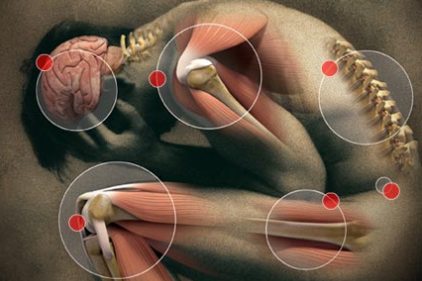Determining the cause of a workplace injury
Ergonomic analysis plays a role

 In many work-related injury claims, the prevailing cause of the injury is called into question by healthcare professionals who commonly help determine if a claimed injury was truly the result of a task performed on the job, or factors such as existing medical conditions or lifestyle habits are to blame. Ergonomic Analysis – Its Use in Medical Causation Cases, is a peer-reviewed feature in the August issue of Professional Safety the American Society of Safety Engineers’ (ASSE) journal.
In many work-related injury claims, the prevailing cause of the injury is called into question by healthcare professionals who commonly help determine if a claimed injury was truly the result of a task performed on the job, or factors such as existing medical conditions or lifestyle habits are to blame. Ergonomic Analysis – Its Use in Medical Causation Cases, is a peer-reviewed feature in the August issue of Professional Safety the American Society of Safety Engineers’ (ASSE) journal.
Medical causation is a medical/legal process in which a set of elements is examined to determine whether they resulted in a work related injury.
The article’s author, Vic Zuccarello, OTR/L, CEAS II, ABDA, Vice President of St. Louis, MO-based BIO-ERGONOMICS Inc., is contracted by insurance companies, attorneys and employers to perform an ergonomic analysis when a question exists as to whether a worker’s claim of injury is job related, or is the result of a medical injury.
During an ergonomic analysis, a healthcare professional examines the risks involved in a particular job, and evaluates them against a medical condition that may make a claimant more prone to a certain condition.
For example, a claim from an individual who suffers from carpal tunnel syndrome, which at one time was assumed to be a predominantly work-related injury, has since been determined in many cases to be caused by other physical conditions such as diabetes or obesity.
“Many cases are caused by disease processes more than from the jobs themselves,” explained Zuccarello.
The article identifies steps that are taken during this process including; an interview, observation and measurement, analysis and report preparation. Factors taken into consideration are the job purpose and essential functions, employee’s schedule, breaks and lunch, development of claimant’s symptoms and an observation of all essential functions and job tasks that should be performed.
The analyst then determines the work cycle, pacing, duration of work and rest periods and repetitions. The article details several common ergonomic assessment tools available to identify the risk involved in a job’s physical tasks including; analysis of forces, repetition and duration, lifting or vibration analysis, assessment of risk based on force and risk for static upper and lower body pressures. At least two of these tools are recommended when performing an ergonomic analysis.
Once the analysis is complete, it is then passed along to a physician who makes the final determination as to whether or not a claimed injury is work related, or brought on by an existing physical condition.
“I take the time to do an evaluation that a physician does not have the time to do themselves,” explained Zuccharello. “Intuitively they know the answer we just have to back them up.”
Looking for a reprint of this article?
From high-res PDFs to custom plaques, order your copy today!









